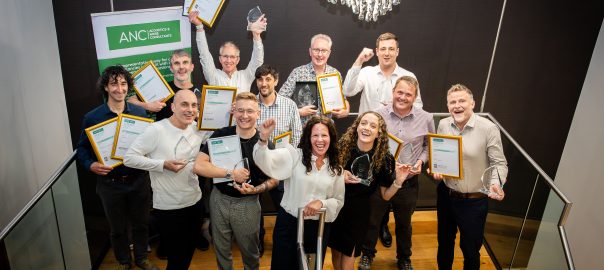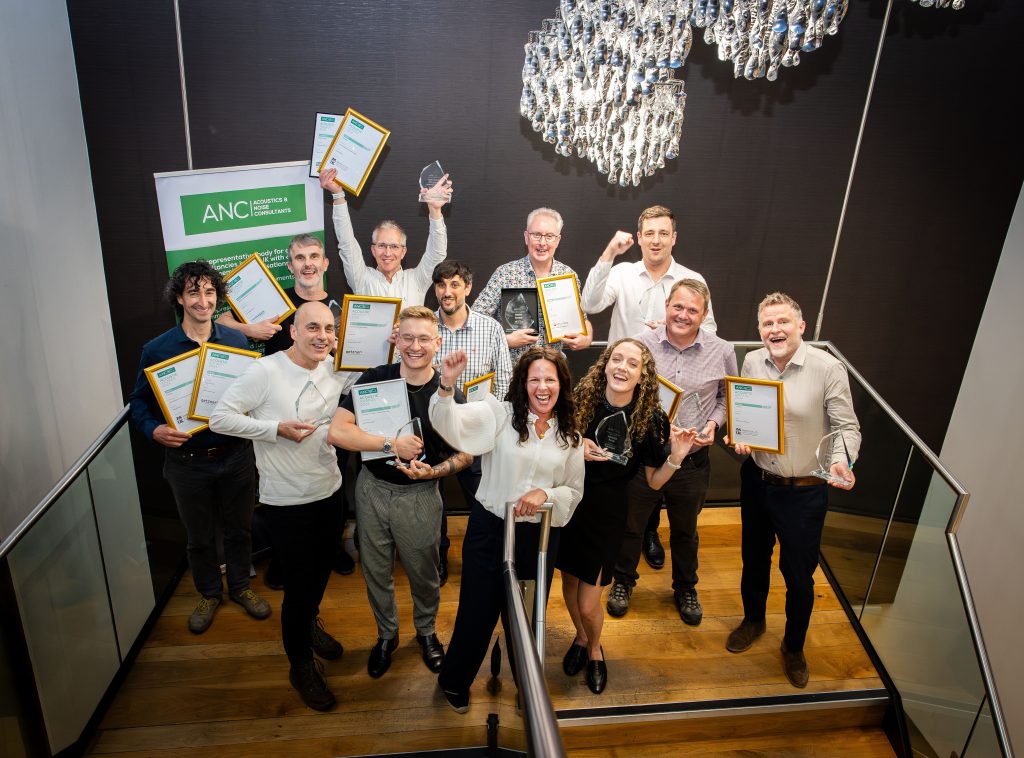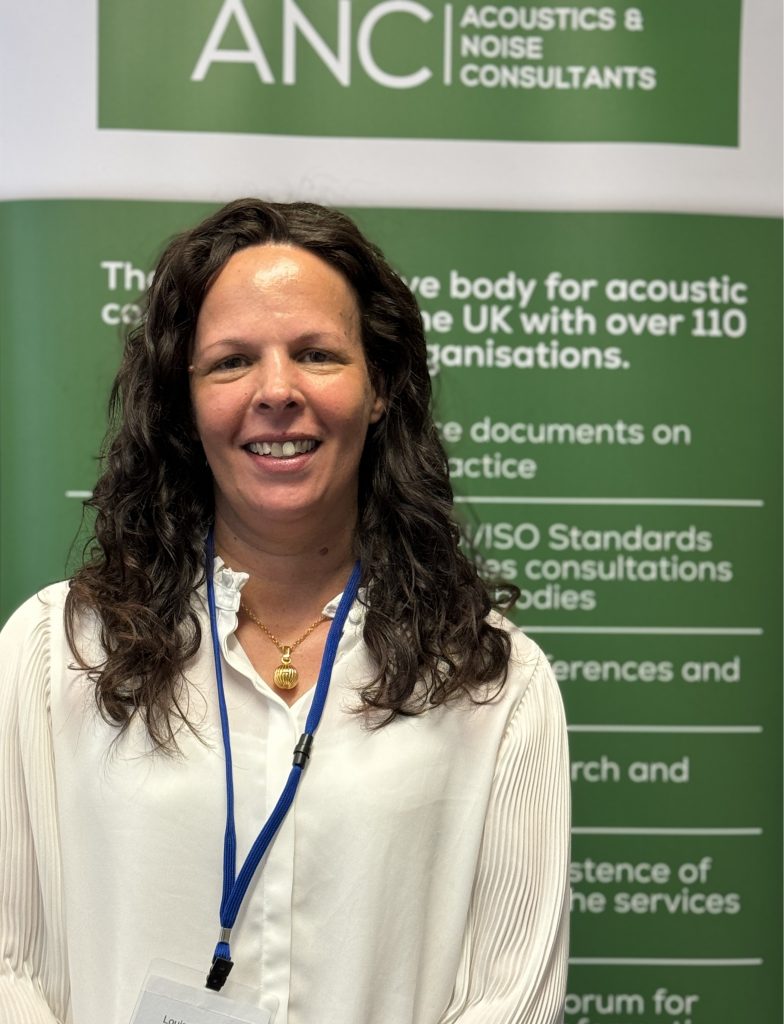John Connell Awards 2025, Palace of Westminster 22nd October 2025. The John Connell Awards 2025 took place at the Palace of Westminster on the evening of Wednesday 22nd October 2025, kindly hosted by The Lord Balfe. The awards were presented by Emma Hardy MP, Parliamentary Under-Secretary of State – Defra and Dr Danny Chambers MP for Winchester.
These unique awards are named after the Noise Abatement Society’s far-sighted founder John Connell OBE, who lobbied the Noise Abatement Act through Parliament in 1960 when noise became a statutory nuisance in the UK for the first time. These unique annual awards, known as the ‘Noise Oscars’, are now in their 24th year. They acknowledge the importance of the quality of sound in our lives, and champion vital advances in reducing the negative impact of unnecessary noise for the public benefit.
Over 350 recipients from local authorities, industry, organisations and individuals have now been honoured for the significant impact they have made to improve the aural environment.
The John Connell Awards serve not only as a celebration of acoustic excellence and community action, but as a national call to value quiet and better sounding environments as fundamental components of everyday life. Each award is a powerful reminder that quieter solutions enable a more healthy, productive and positive life for all.
The Noise Abatement Society (NAS) is a dynamic UK charity whose aim is to share a better understanding of what sound is, how it affects us and how we can solve noise problems in a pragmatic and sustainable way. Its internationally respected work helps to relieve the physical and mental distress caused by excessive noise which profoundly affects health and wellbeing, learning, productivity and social cohesion https://noiseabatementsociety.org/
John Connell Sustainable Development Award 2025 – sponsored by Association of Noise Consultants & ANV Measurement Systems
This award recognises transformative and/or novel products, services, and solutions that reduce noise and/or enhance sound quality. This award recognises advancements that benefit society, the environment and the economy and highlights impactful approaches leading to quieter, health promoting, and sustainable placemaking.
Winner: Sustainable Acoustics Ltd and Mason UK
Sustainable Acoustics Ltd and Mason UK have won the John Connell Sustainable Development Award 2025 for their project: Acoustics for a Sustainable Future: The Carbon Benefits of Isolating Retrofits. In collaboration with Mason UK, they converted a six-story 1890s building above London’s Northern Line into 90 residential apartments, applying innovative structural isolation to reduce structure-borne noise to levels suitable for restorative sleep. The approach cut carbon emissions by 80% compared with traditional box-in-box methods, preserved the historic building fabric, and enabled economically viable urban housing. This project demonstrates how acoustic innovation can support sustainable development, enhance health and wellbeing, and deliver environmental and economic benefits, setting a benchmark for retrofit solutions in urban environments.
Gloria Elliott OBE, NAS CEO said, ‘Retro-fitting older buildings to high acoustic standards is a huge challenge – many congratulations to Sustainable Acoustics and Mason UK for their outstanding holistic benchmark solutions, a great acoustic innovation for future renovations.’
Contacts:
Association of Noise Consultants: Robert Osborne, Association Manager, ANC: robert.osborne@admin.co.uk
ANV Measurement Systems: Mike Breslin MD mbreslin@anv.uk.com
NAS contact: johnconnellawards@noise-abatementsociety.org
John Connell Sustainable Development Award sponsored by Association of Noise Consultants and ANV Measurement Systems Winner: Sustainable Acoustics Ltd and Mason UK presented by Dr Danny Chambers MP for Winchester.
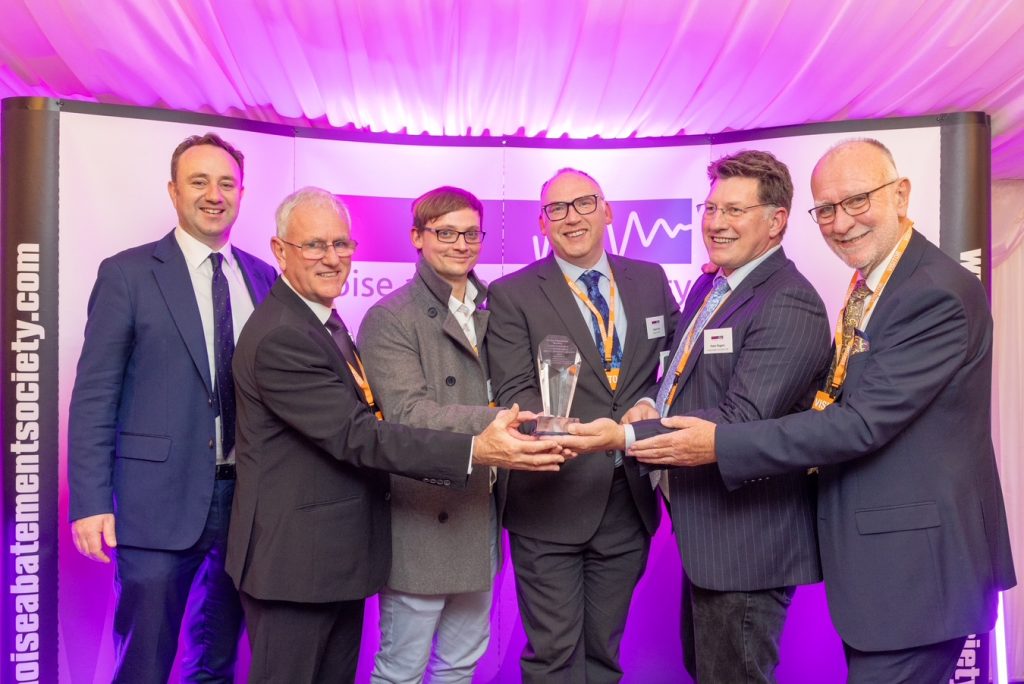
Photo: Dr Danny Chambers MP for Winchester with representatives from ANV Measurement Systems, Mason UK, Sustainable Acoustics, and the Association of Noise Consultants.
Highly Commended: Natural Resources Wales, Noise Consultants Limited and Land Use Consultants
Natural Resources Wales, Noise Consultants Limited and Land Use Consultants have won the Highly Commended John Connell Sustainable Development Award 2025 for Tranquillity and Place – A National Resource for Wales, a nationally consistent dataset mapping and assessing tranquil areas across Wales. By combining acoustic principles, visual assessment, and stakeholder engagement, the project provides an evidence-based resource to inform policy, planning, and environmental decision-making.
The project enhances soundscapes, encourages sustainable land management, and fosters public awareness of the value of quiet spaces. Integrated into Welsh Government reporting and planning processes, the resource contributes to healthier, more sustainable, and economically vibrant communities across Wales.
Gloria Elliott OBE, NAS CEO said, ‘Recognising the importance for communities to be able to enjoy tranquil areas has now been supported by this data-set mapping, a great resource for the Welsh Government – well done to Natural Resources Wales, Noise Consultants Limited and Land Use Consultants.’
Contacts:
Association of Noise Consultants: Robert Osborne, ANC: robert.osborne@admin.co.uk
ANV Measurement Systems: Mike Breslin MD mbreslin@anv.uk.com
NAS contact: johnconnellawards@noise-abatementsociety.org
John Connell Sustainable Development Award sponsored by Association of Noise Consultants and ANV Measurement Systems Highly Commended: Natural Resources Wales, Noise Consultants Limited and Land Use Consultants presented by Dr Danny Chambers MP for Winchester.
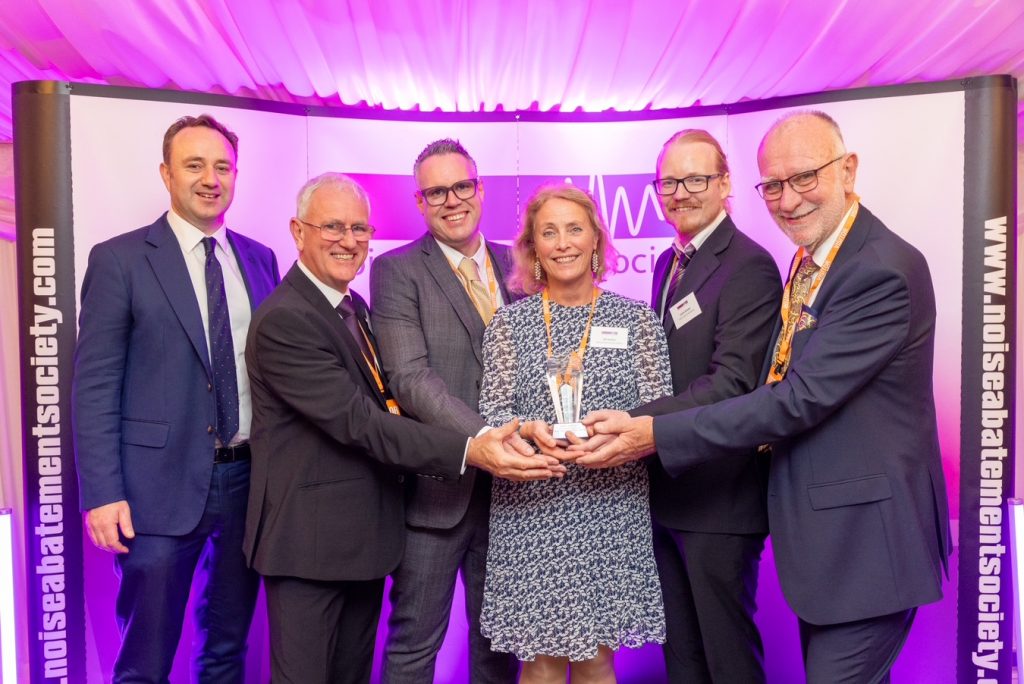
Photo: Dr Danny Chambers MP for Winchester with representatives from ANV Measurement Systems,Noise Consultants Limited, Natural Resources Wales, Land Use Consultants, and the Association of Noise Consultants.

